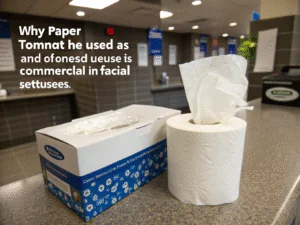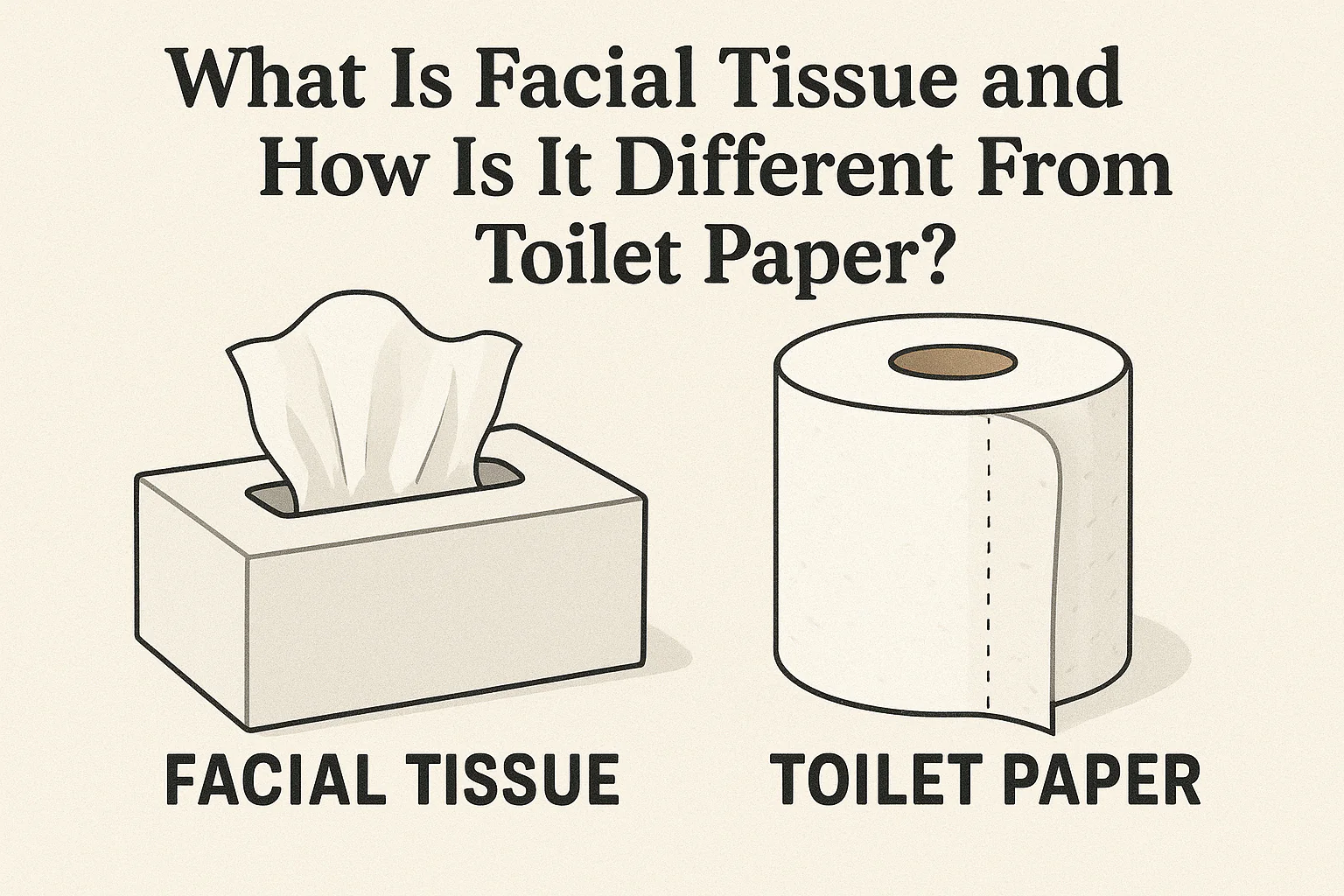What Is Facial Tissue and How Is It Different From Toilet Paper?
Not all tissues are created equal — and confusing them can cost you more than comfort. Let’s break down what makes facial tissue different from toilet paper.
Facial tissue is softer, stronger, and made for facial use, while toilet paper is designed to dissolve in water. Each has a distinct function and using them interchangeably can cause problems.
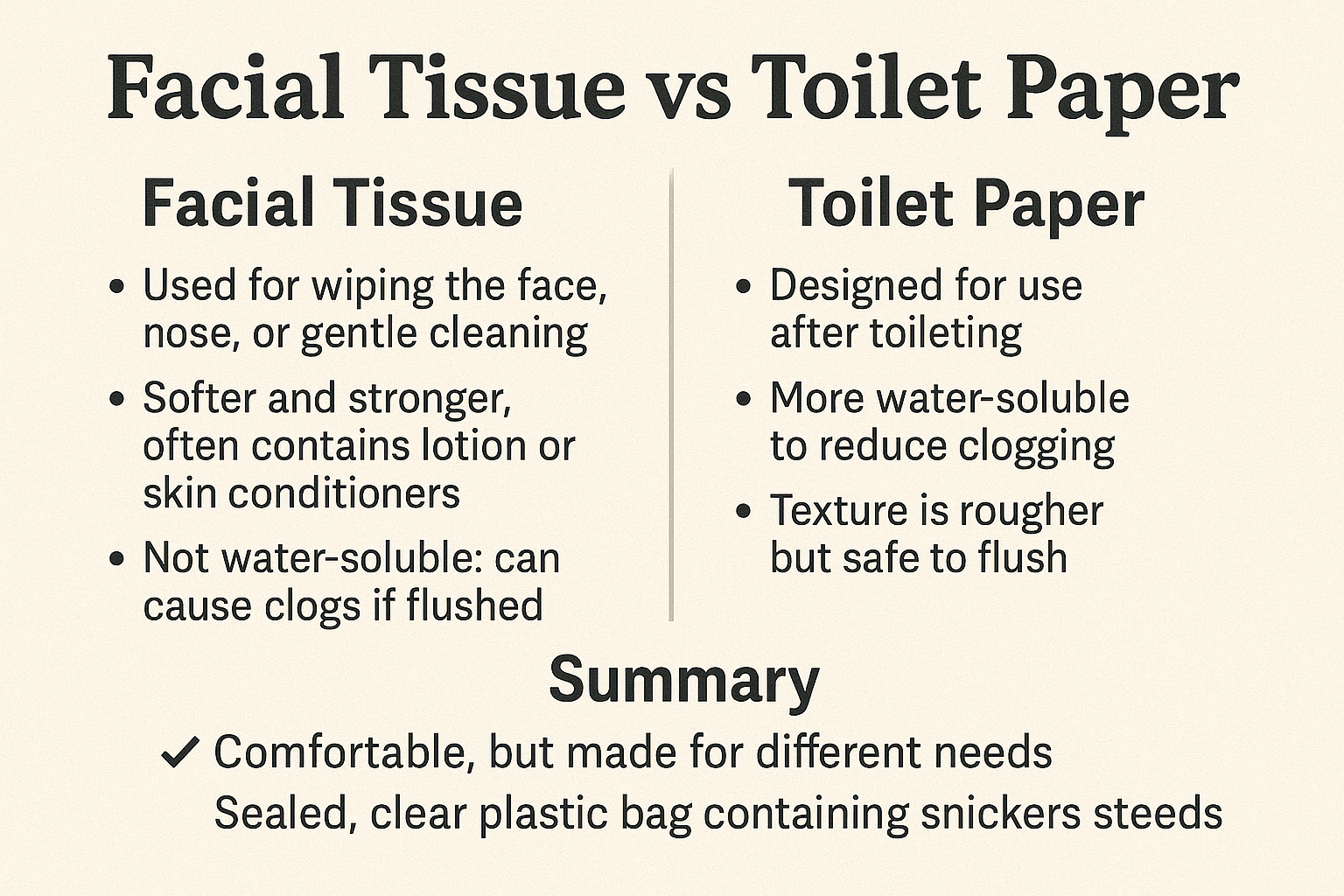
We often treat tissue as one-size-fits-all — but that’s not true. Let’s look closer at these subtle but important differences that affect your skin, plumbing, and wallet.
What is the difference between toilet paper and facial tissue?
They look similar and both come in rolls or boxes — so what’s the real difference between them?
Toilet paper is built to disintegrate quickly in water, while facial tissue is treated to stay intact for facial use. One is flushable, the other is not.
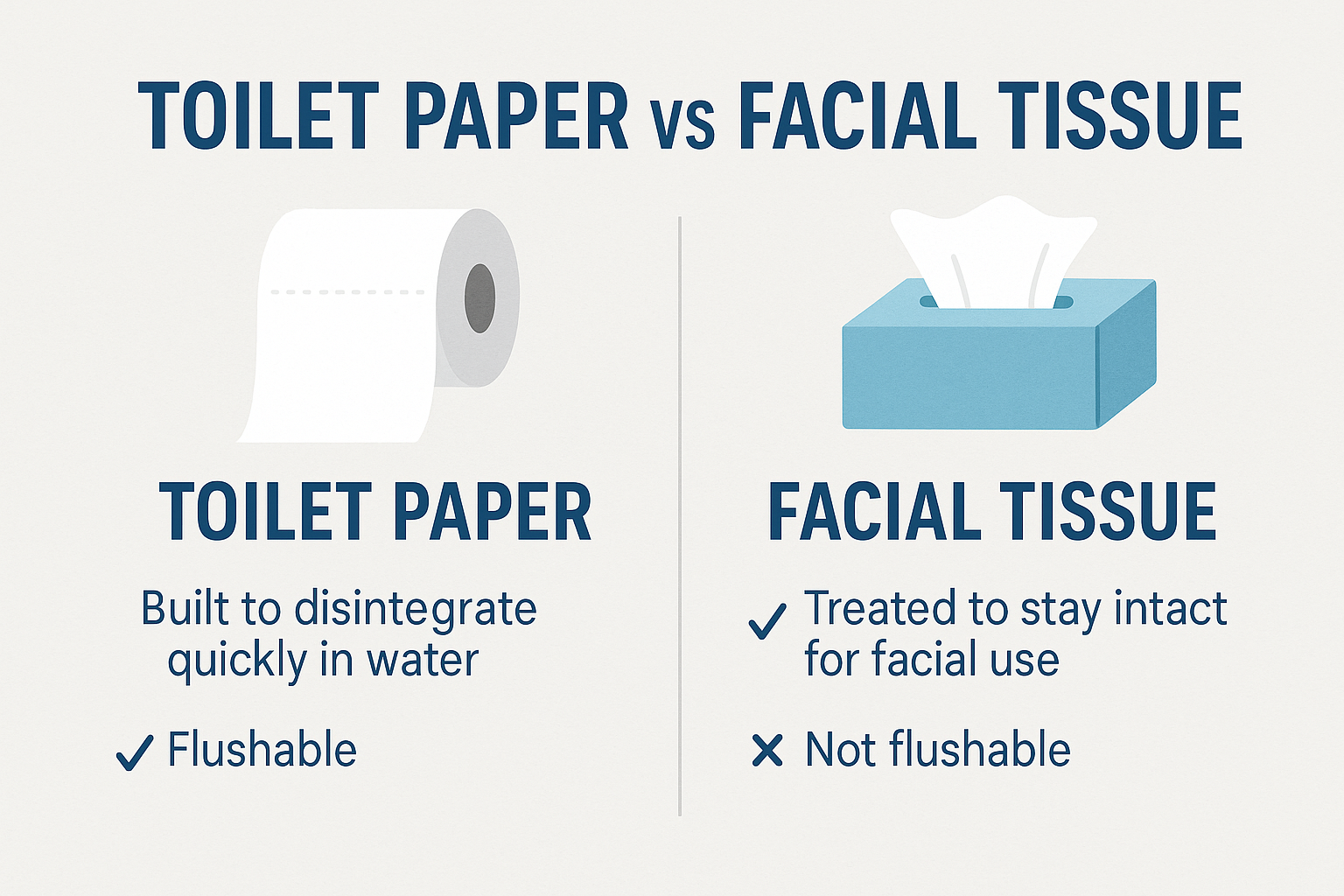
I’ve learned the hard way that using toilet paper to wipe your nose during allergy season just doesn’t work. It falls apart and leaves your skin irritated. I once got a red, dry nose just because I thought I could save money by using toilet paper instead of tissues. I won't do that again. Facial tissue is made for facial skin. It’s smoother and stronger. Most facial tissues use special binders to help the sheet stay together when wet. Some even have aloe or other softening ingredients.
Toilet paper is different. It breaks down as soon as it touches water. This makes it safe for plumbing. If you flush facial tissue, it can clog your toilet or damage your septic system. Even though they look similar, these papers are built for very different things. This is why it’s better to keep a box of tissues on your desk and use toilet paper only in the bathroom. Each one does its job better in the right place.
Can I use toilet paper as tissue?
It’s tempting to reach for toilet paper when tissues run out — but is it a good idea?
Toilet paper isn’t as gentle as facial tissue and may cause irritation with repeated use. It also tears easily when wet, making it messy for facial use.
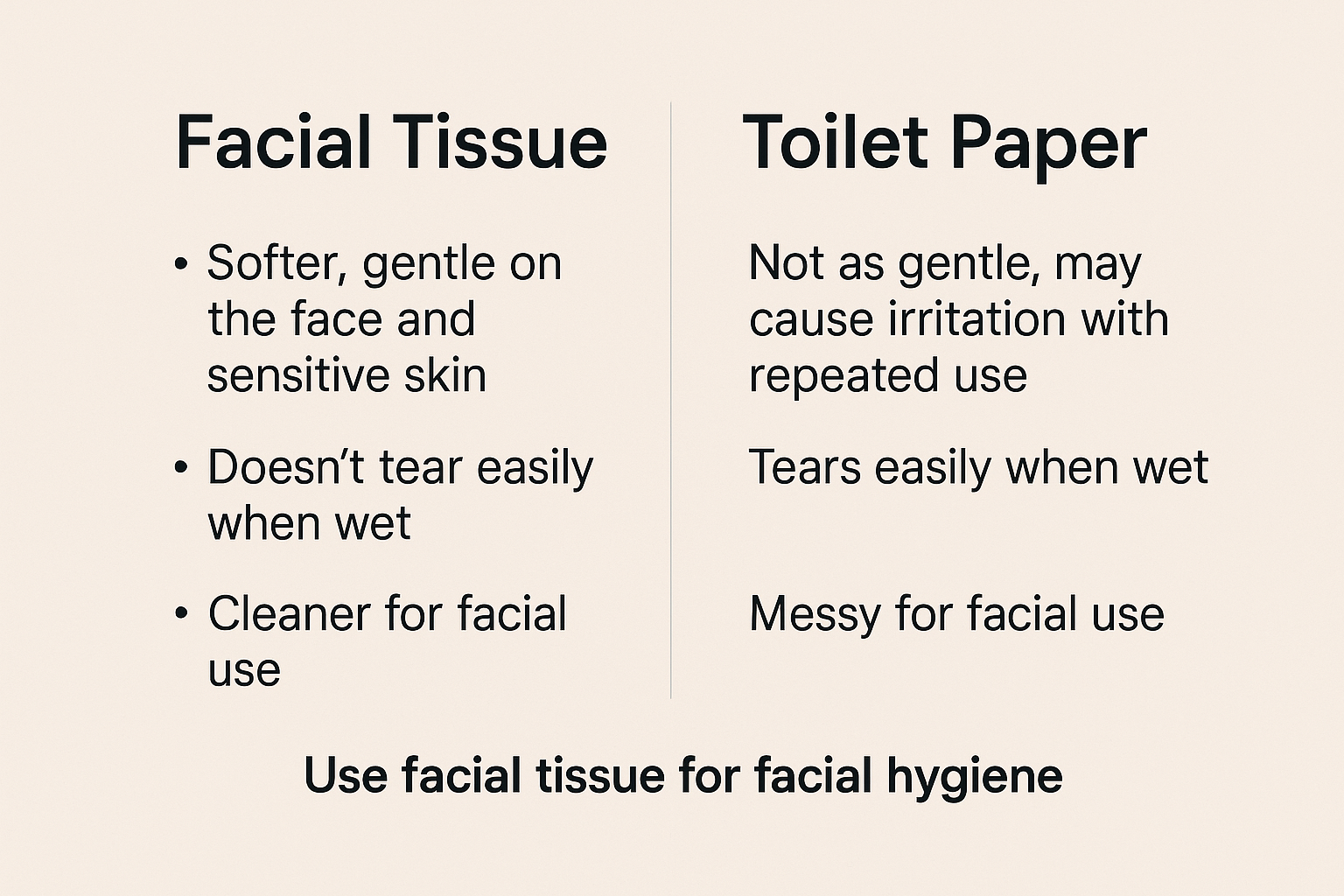
I remember one winter when I had a cold for almost a week. I ran out of tissues halfway through and thought, “Toilet paper is paper too, why not?” Big mistake. My nose hurt more and more every day. Toilet paper feels okay for a wipe or two, but it doesn’t hold up. It rips and turns soggy when wet. That means you use more of it, and your skin takes a hit too.
Facial tissues are designed for noses and faces. They stay strong when wet. They don’t fall apart in your hand. They’re also much softer, which makes a huge difference when you’re wiping your nose twenty times a day. I even noticed that some facial tissues have a slight lotion feel, which helps when your skin gets sore. That’s not something toilet paper is made to do. So yes, you can use toilet paper in a pinch, but it’s not something I’d recommend if you care about comfort.
Can I use tissue paper to clean my face?
All tissue paper looks the same, right? Not quite — especially when it comes to facial care.
Only facial-grade tissue is made for skin contact. Other tissue types (like gift wrapping paper) may include dyes or chemicals unsafe for the face.
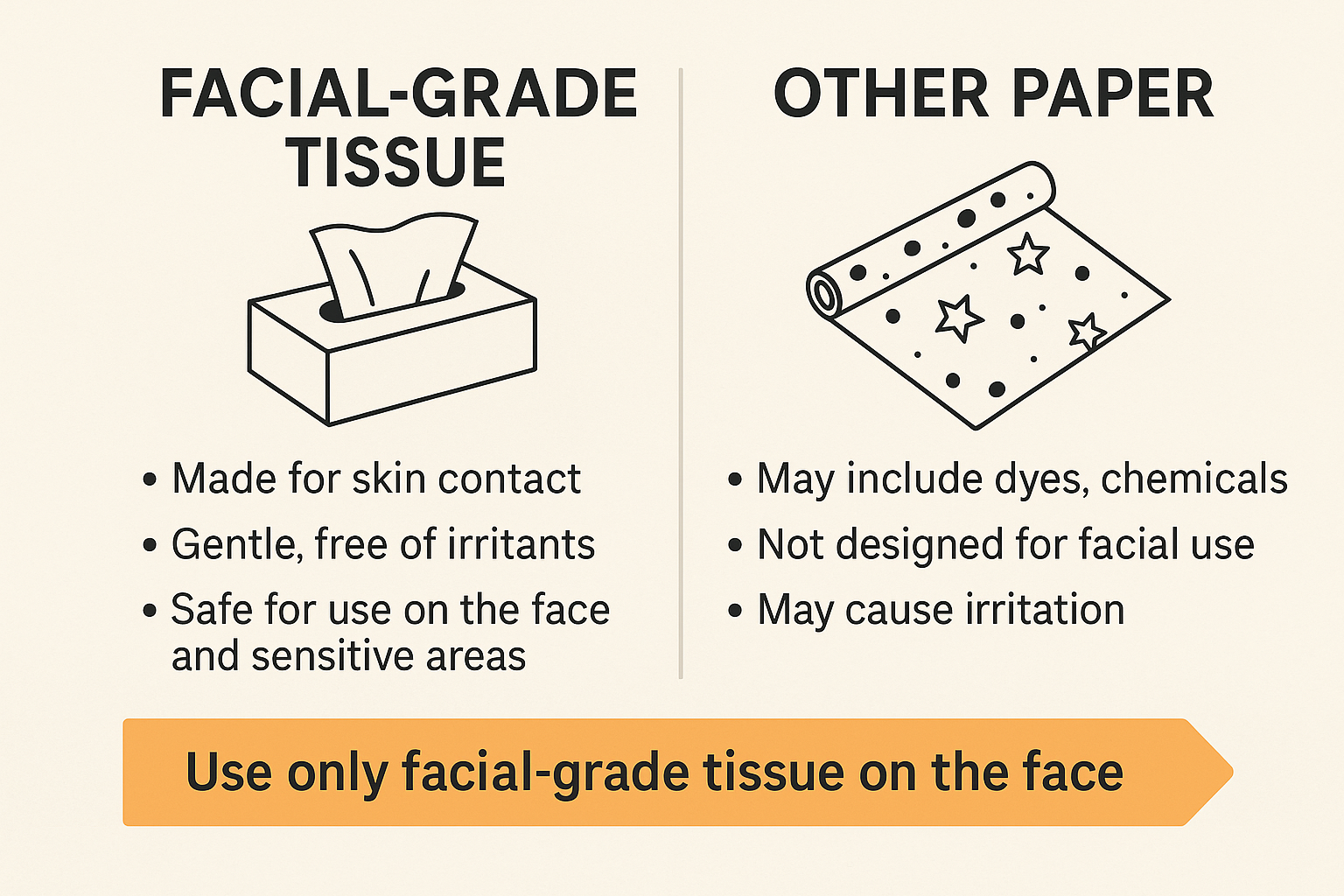
I’ve seen people use gift-wrapping tissue or napkins to clean their faces. I’ve even tried it myself when I had nothing else on hand. It felt rough, and I started itching later that day. Tissue paper is a general term. It includes wrapping paper, decorative shreds, even paper for crafts. These types of tissue are not made for skin. They may be bleached, colored, or sprayed with chemicals to make them shiny or strong. That’s not something you want on your face.
Facial tissue, on the other hand, is tested for skin contact. The fibers are smoother. They are processed in clean conditions. Many brands even label them as “dermatologist tested.” If you care about your skin, especially if you have sensitive skin like I do, you’ll want to stick with facial tissue. Anything else is a gamble. Even napkins or hand towels can be too rough. For your face, use only products made for faces. It makes a difference you can feel.
Does tissue paper dissolve in water like toilet paper?
You might assume all tissue dissolves the same in water — but your plumbing would disagree.
Toilet paper dissolves quickly to protect your pipes. Facial tissue doesn’t — it’s made to stay strong, even when wet.
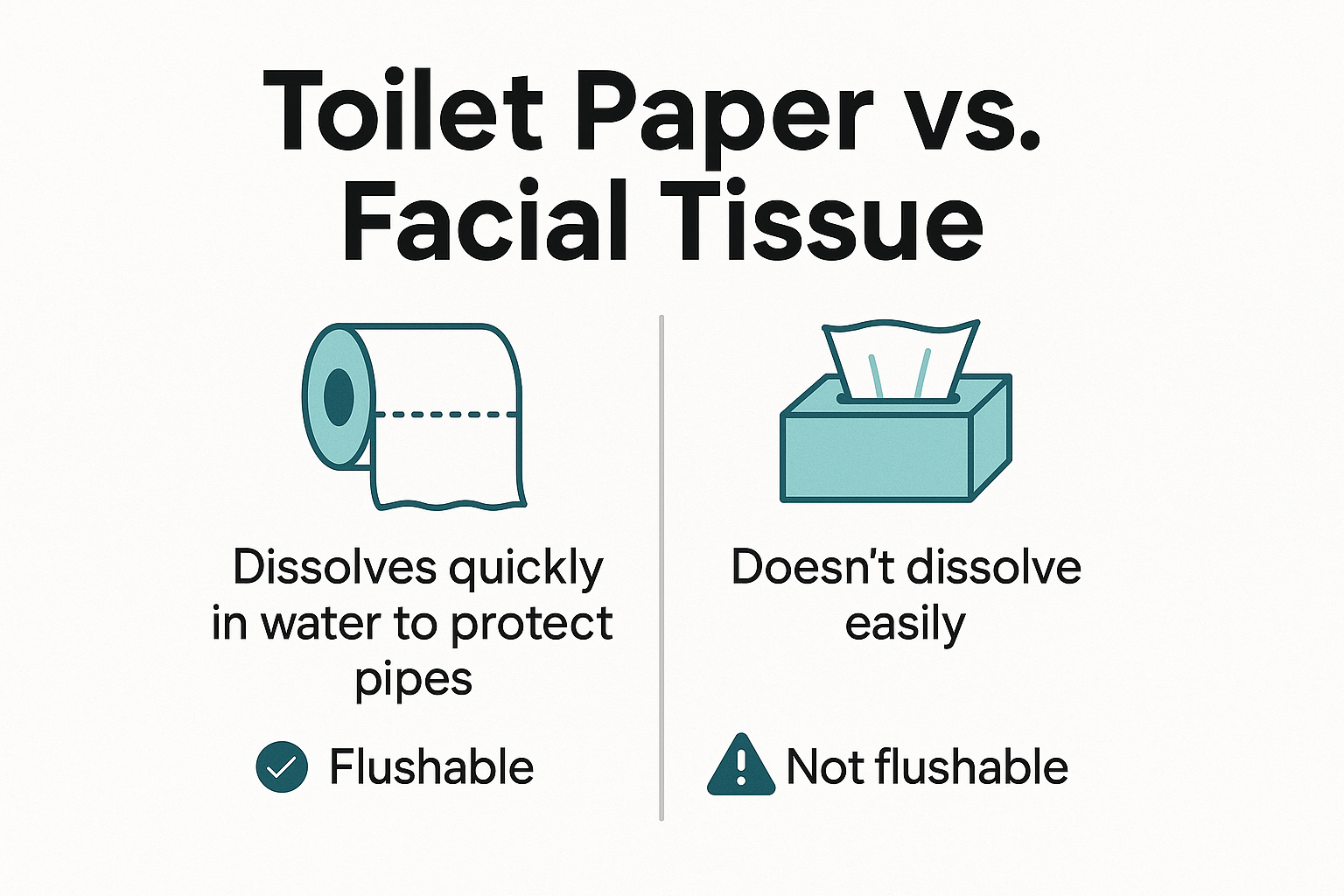
One day, I flushed a few facial tissues after blowing my nose. I thought, “They’re just like toilet paper.” A few days later, the toilet backed up. That’s when I learned a costly lesson. Toilet paper is made to fall apart in water. It breaks down in just a few minutes. It’s supposed to do that so it doesn’t clog pipes. It’s tested for that exact reason.
Facial tissue is the opposite. It’s made to hold together when wet. That’s good for your nose but terrible for your toilet. It has chemical binders that stop it from breaking down easily. That means if you flush it, it can build up in your plumbing. You won’t notice at first, but over time, you’ll get a blockage. I now keep a small trash bin in my bathroom for tissues. It’s a small step that saves big problems later. Always throw facial tissues in the trash, not the toilet.
Tissue vs toilet paper cost: Which is more economical?
Trying to save money by using one paper product for everything? You may be paying more than you think.
Toilet paper is cheaper per sheet, but facial tissue offers better performance for face care. Misusing either could lead to more expenses later.
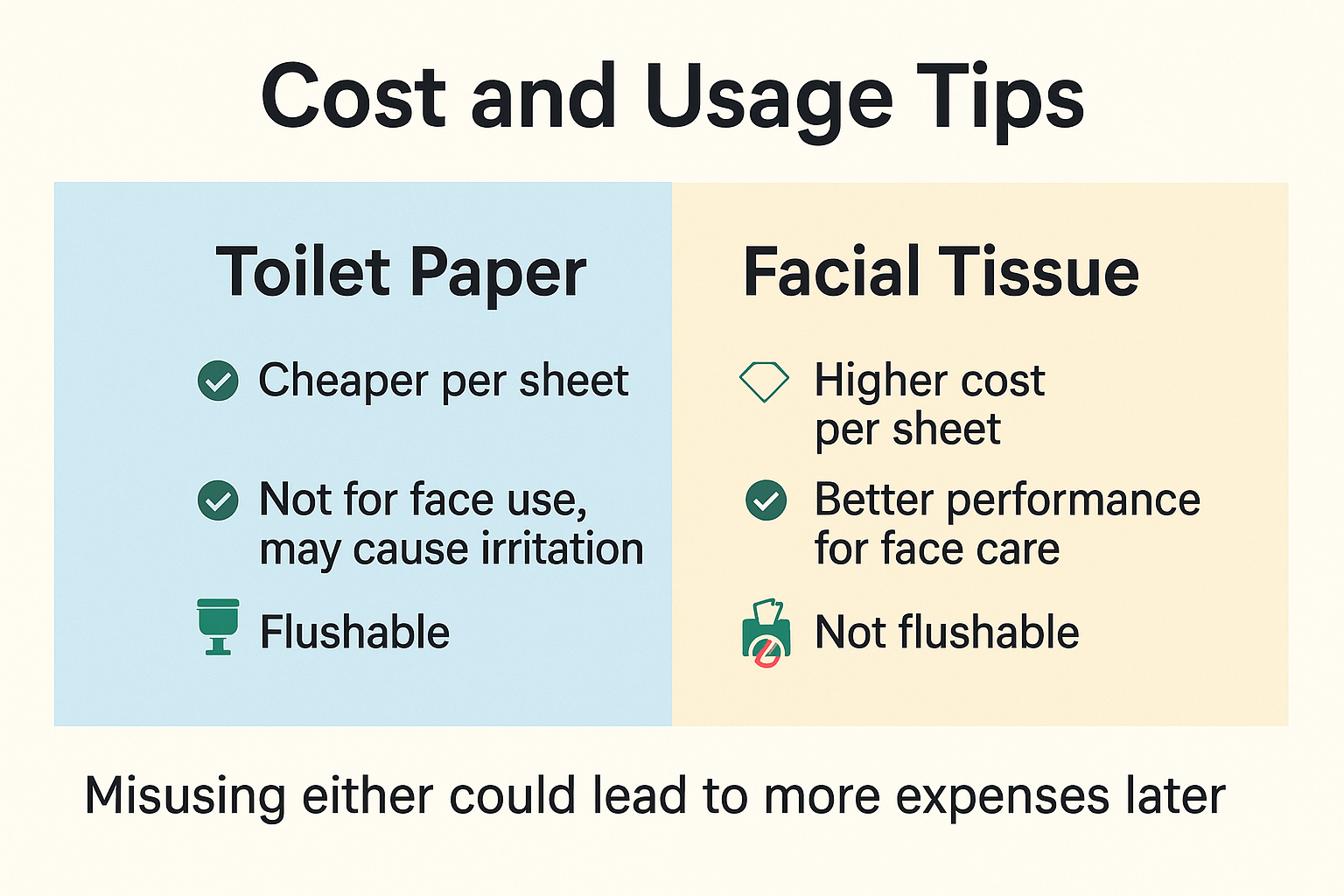
I used to think I was saving money by skipping tissues and using toilet paper for everything. But I went through it faster. I had to use more sheets to get the job done. Then I bought tissues again, and I realized I used fewer sheets each time. They were stronger and more absorbent. That meant a single tissue did the work of two or three toilet paper squares. I also didn’t get skin irritation, which meant I didn’t need creams to treat the problem.
Toilet paper usually costs less when you look at the price per roll. But when you factor in how much you need to use, the difference shrinks. And if you end up with a clogged toilet or sore skin, the hidden cost is even higher. I still buy both now. Toilet paper stays in the bathroom. Facial tissues go in my bag, my desk, my car. I use each where it works best. That’s the real savings.
Conclusion
Facial tissue and toilet paper are not the same. Each is made for a different job. Use the right one, and both your face and plumbing will thank you.
Share this article
About the Author

You might also like
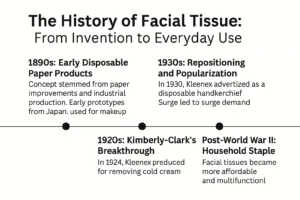
The History of Facial Tissue: From Invention to Everyday Use?
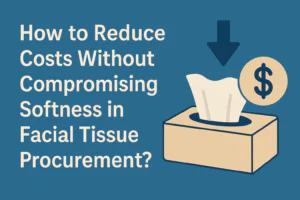
How to Reduce Costs Without Compromising Softness in Facial Tissue Procurement?

Is Bamboo Pulp a Better Option for Soft Facial Tissue Buyers?
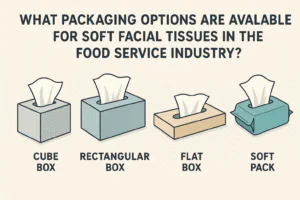
What Packaging Options Are Available for Soft Facial Tissues in the Food Service Industry?

Why Is Softness the Top Priority in Facial Tissue Selection?

How to Choose the Right Soft Facial Tissue for Middle Eastern Markets?

What Are the Key Features of High-Quality Soft Facial Tissues for Retail Chains?

How Can Customized Soft Facial Tissue Packaging Elevate Your Brand?

Why Do Wholesalers Prefer Soft Facial Tissues Made from Virgin Pulp?
